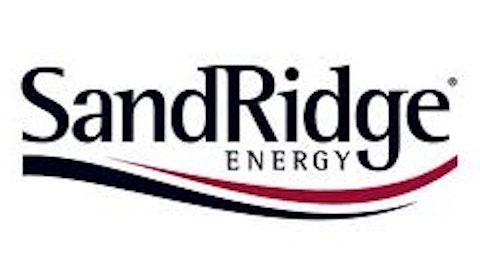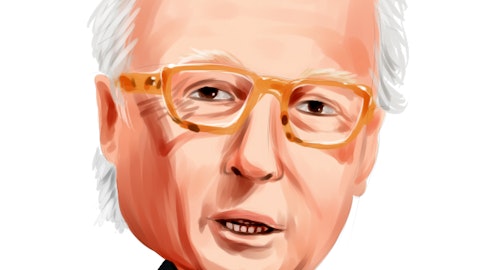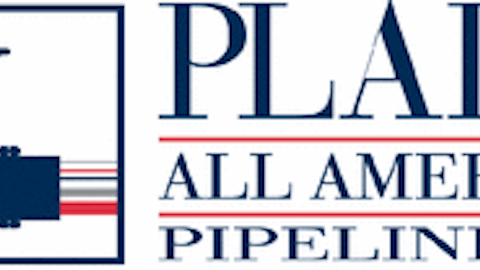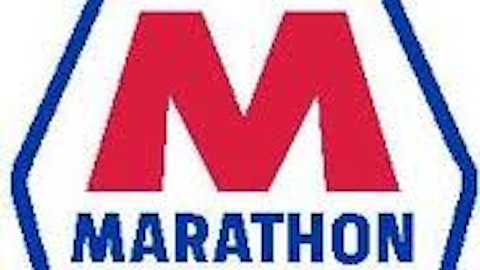As US domestic energy production expands, there are winners and losers in the game. Below I highlight an established winner, a winner in the making, and a company that’s on the verge of becoming a complete loser.
Although they operate in different aspects of the US energy industry, they all should be making money for their investors. Alas, that doesn’t always happen.
A clear winner
It would be difficult to argue that Enterprise Products Partners L.P. (NYSE:EPD) represents anything but a winning investment. Look at the chart and see for yourself.
This oil and natural gas pipeline company has rewarded investors with growing dividends since 2004 and capital gains for four years, with no end in sight.
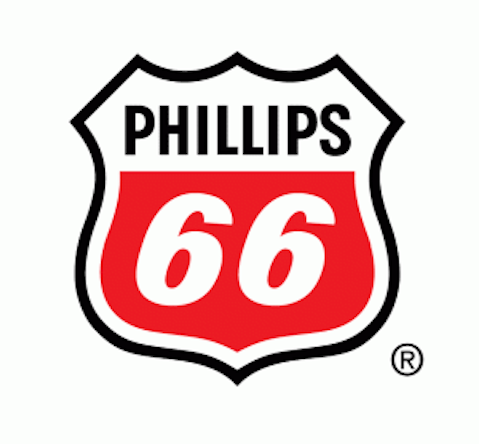
Right now, Enterprise Products Partners L.P. (NYSE:EPD) pays roughly a 4.3% yield while selling at almost 21 times earnings — and no wonder! According to The Motley Fool, Enterprise sports a return on equity of 19.5%, a five-year earnings growth rate of 17.1% and a five year dividend growth rate of 5.39%. As American energy production grows, Enterprise Products Partners L.P. (NYSE:EPD) looks well positioned to capitalize on that growth.
Off to a great start
Launched in May, 2012, Phillips 66 (NYSE:PSX) stock has gained over 80%, which makes for an impressive chart. It’s easy to think of Phillips 66 as simply an oil refining company. To be sure, they do that, and do that well. Beyond refining, Phillips is a midstream oil and gas company and a chemical producer.
The company makes no bones about it: All domestic segments of Phillips 66 (NYSE:PSX) currently focus on exploiting US domestic energy production. Phillips hopes to eliminate expensive foreign oil in favor of cheaper US oil, and it’s actively pursuing transportation infrastructure or partnerships to achieve this goal. According to the company’s presentation to Credit Suisse, every dollar of savings on a barrel of oil translates into $450 million in net income.
Given the price difference between WTI and Brent crude of about $21 per barrel, this is prudent strategy. Despite the stock’s run-up, abundant free cash flow and a ROE of 18.8%, Phillips 66 (NYSE:PSX) still sells at less than 10 times earnings and a five year PEG of 0.78. The company has increased its dividend and has plans for a share buyback.
Other plans include a possible spinoff of its midstream operations as an MLP. Between its current profitability, the potential for increased net revenue from increased US oil purchases and a planned stock buyback, Phillips 66 looks like another US energy investment success story.
And then there’s SandRidge
By now, most investors in US energy, particularly natural gas, know all about Aubrey McClendon and his shenanigans at
Chesapeake Energy Corporation (NYSE:CHK). Turns out, his Chesapeake co-founder, Tom Ward, has been doing similar shenanigans at SandRidge Energy Inc. (NYSE:SD).
For example, there’s Ward’s growing compensation, despite the near-80% decline of Sandridge stock since its IPO. The hedge fund firm TPG-Axon has provided more details regarding Sandridge’s recent activities here. Does anyone besides me see a parallel here between Chesapeake and SandRidge stock?
But the big financial stake poised over SandRidge’s heart is its new strategy in Mississippian lime in Oklahoma and Kansas. Simply stated, SandRidge sold known producing assets in the Permian Basin to concentrate on promising but unproven assets in the Mississippian Lime formation.
Two questions rear their ugly heads: First, how will SandRidge replace the significant Permian Basin revenue while exploration of the Mississippian Lime begins? Some believe the Mississippian Lime is a lower oil margin asset than the Permian Basin assets. Selling producing assets when your company suffers from poor earnings, negative cash flow and a heavy debt load strikes me as a bad move. Other analysts seem to agree, and project a loss in Q4 2012 and for 2013.
Second, just what is the Ward family’s interest in this Mississippian play? As the TPG-Axon presentations point out, there are several apparent conflicts of interest connected to this asset play. SandRidge has denied any impropriety. Time will tell whether TPG-Axon’s bid to unseat Ward and the SandRidge board will succeed.
Final Foolish Thoughts
There’s money to be made in US energy production. Ask those who own Enterprise or Phillips. But it’s not failsafe, as investors in Chesapeake or SandRidge will attest.
Ideally, a combination of due diligence on the part of the investor and transparency on the part of the company will lead to good investment decisions. Certainly, a track record, growing dividends and prudent business decisions indicate a good company to invest in. Enterprise and Phillips 66 (NYSE:PSX) fit that bill.
Does SandRidge represent a turnaround story? In my opinion, no — or at least, not yet. Given the poor track record of the company’s earnings, and the questionable wisdom, if not conflict of interest, of Mississippian Lime exploration, SandRidge looks more like a poorly managed company than a good investment. Until Ward goes, there are better companies around.
The article A proven winner, a likely winner and a dud originally appeared on Fool.com.
Copyright © 1995 – 2013 The Motley Fool, LLC. All rights reserved. The Motley Fool has a disclosure policy.
